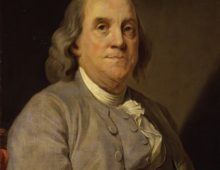Tagged with Equality
Resource : Portrait of Mary Wollstonecraft
Mary Wollstonecraft was a revolutionary writer who made a powerful case for educating and emancipating women. She is still regarded as one of the founders of modern British feminism.
Resource : Description of a Slave Ship
Transatlantic slavery was a brutal system which forcibly shipped over twelve million Africans to the Americas and lasted over 300 years. It allowed African men, women and children to be stolen from their homeland, bought and sold as property and used to produce sugar, coffee, cotton and other goods for huge profit in the European and North American markets. This print was made to highlight the inhumane conditions under which enslaved Africans were transported across the Atlantic Ocean, forced to make the long voyage from West Africa to the Americas, tightly packed into the hold of ships and held in chains.
Resource : Banner from the “Peterloo Massacre”
On the 16th August 1819, a huge crowd of people gathered in St Peter’s Field, Manchester to hear Henry ‘Orator’ Hunt and other noted radical speakers calling for parliamentary reform. At least 17 people would die of injuries received on the day, and around 700 suffered serious wounds at the hands of local armed forces. There was a popular outcry, and the radical press named the incident the ‘Peterloo Massacre’, a mocking reference to the Battle of Waterloo.
Resource : Portrait of James Barry
Born Margaret Bulkley, James Barry lived most of his life as a man, qualifying as a doctor and becoming an accomplished and respected military surgeon. His identity as a woman was only revealed when his maid laid him out after his death. It is not known whether Barry identified as a man or whether he simply kept up a disguise in order to have a medical career, at a time when women were denied this opportunity.
Resource : Cotton kerchief (headwrap)
The headwrap originated in sub-Saharan Africa. For centuries, it has been worn by women in different African countries and regions, in different forms, to reflect both communal and personal identities – which clan or tribe they belonged to, whether they were married, widowed, young or old, for example. This cotton kerchief, or headwrap, belonged to Nancy Burns (1800 – 1849). Born in Albany, New York, the daughter of slaves, she would eventually find work as a house servant and was painted in a portrait wearing the item in the 1840s. It represents a long history of cultural identity associated with women of African origin – particularly African-American women – that is still very much alive today.
Resource : Brontë little books
The Brontës – Charlotte (1816-1855), Emily (1818-1849) and Anne (1820-1849), are the most famous sisters in English Literature. Their insightful, dramatic and often subversive novels, published in the mid 1800s, provide a unique window into the social conditions of the time. With unforgettable characters like Jane Eyre and Heathcliff, and themes which are still highly relevant today, their stories have become classics and been adapted over and over again for stage and screen.
Resource : Phrygian ‘liberty’ cap
Red Phrygian or ‘liberty’ caps were long associated with the theme of liberty in European and colonial cultures. They were used as icons during the American Revolution and worn during the French Revolution in the late 1700s and came to symbolise allegiance to the republican cause. Along with the red, white and blue cockade, pinned to these and other hats, they became a lasting symbol of revolutionary France.
Resource : The factory child’s trouble – sampler
This is a sampler that records the sufferings of a child, working in one of the many textile mills in Salford (Greater Manchester). It was sewn by Elizabeth Hodgates who was 12 years old in 1833 and reminds us of the terrible working conditions for children, women and men during the industrial revolution.
Resource : The Pussyhat
The Pussyhat project is a social movement focused on raising awareness about women’s issues and advancing human rights. Propelled by social media – a revolution in communications – the pussyhat has rapidly become an international symbol for women’s rights, political resistance and collective action.
Resource : Poster advertising the Chartists’ Demonstration on Kennington Common, 1848
The Chartists were members of a national and generally peaceful protest movement who campaigned between 1838 and 1857 for political reform and representation of working class people. It was the first British mass movement to be driven by the working classes. The development of the industrial printing press helped spread the word and gather support for peaceful protests. The Chartists’ ‘demands’ still underpin British democracy today.


